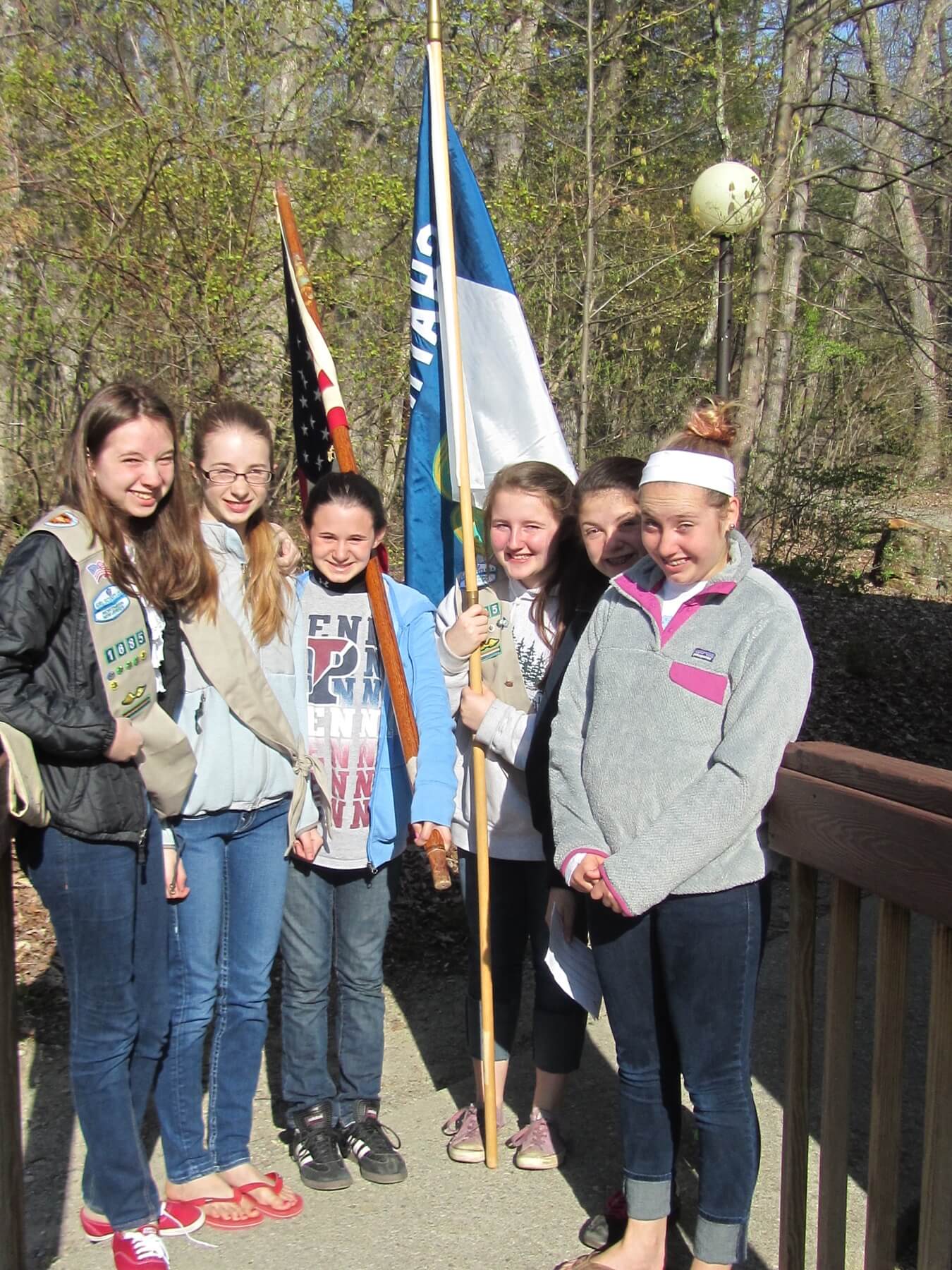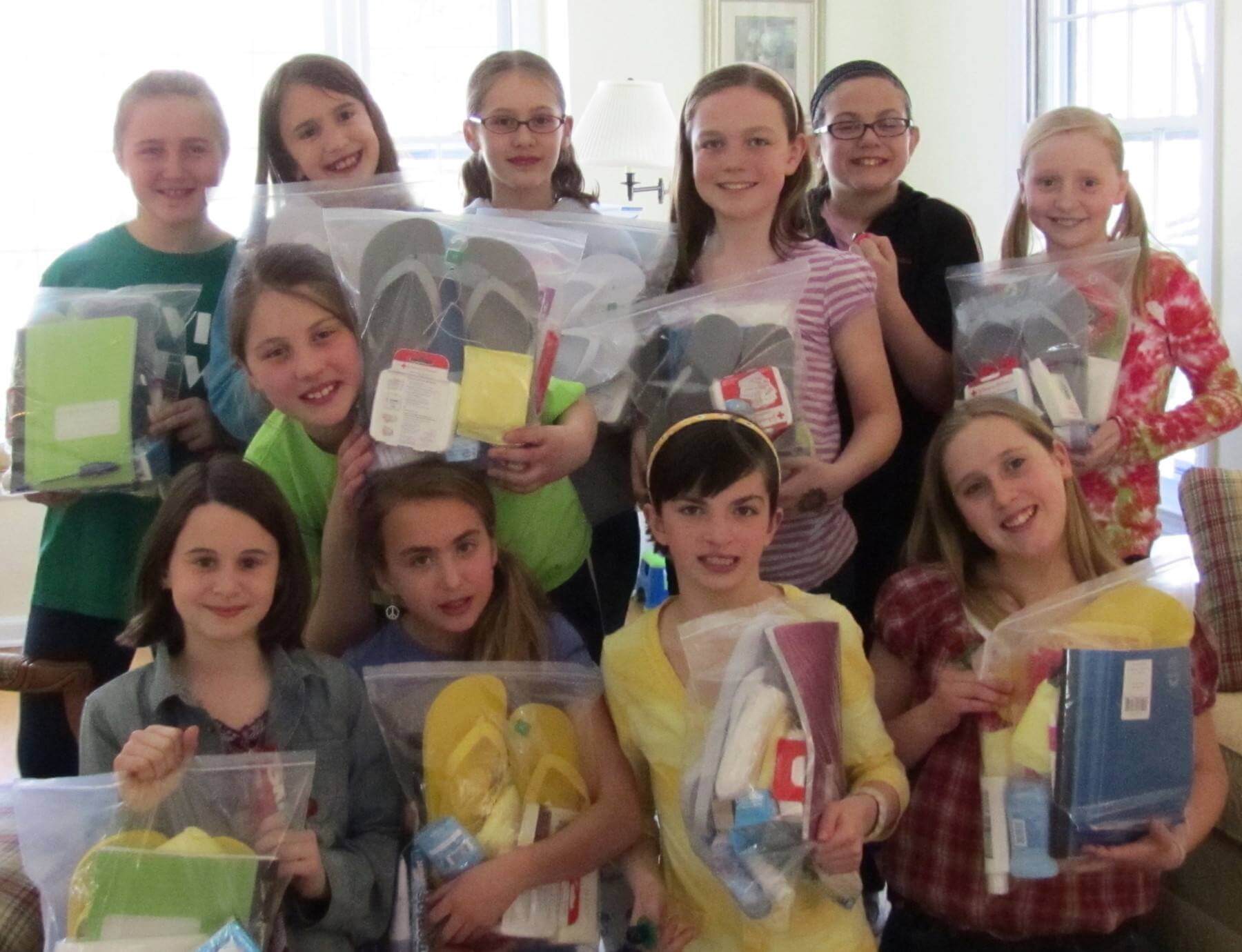Southern Voice: Tricia Glenn
If you live in suburban America, you know the novelty of Girl Scout cookie season. Adorable little girls with pigtails going door to door with a red wagon, cookie booths blockading your local grocery store, and maybe a form from your coworker’s daughter floating around the office. No matter where you get your fix, one thing remains true: The inability to say no is universal.
As a Girl Scout myself, saying no is twice as hard. Ten-plus years ago, I, too, guilted the general public into buying from me at cookie booths. If it’s any consolation, it takes just as much will power (maybe more) for us not to eat them before selling them as it does for you to walk away. These days, I’ve handed down the torch, and my old stomping grounds have been taken over by my younger cousins and girls in my neighborhood. Some may say I’m retired, but despite common misconceptions, selling cookies is only a small part of being a Girl Scout. If cookie season is only a three-month period, what are we up to in the other nine months of the year?


Cute little girls in sashes is the image people most often associate with Girl Scouts. I admit, we are pretty cute, but allow me to introduce another side of the narrative. As a 19-year-old Girl Scout, what, exactly, do I do?
The answer is more complex than it seems, but simply put, I engage in my community.
Community engagement can look like any number of things, but last summer, I completed my Gold Award. An 80-hour minimum service project, the award challenges girls to identify an issue in their community and create a plan to take action. The highest achievement in Girl Scouting, the Gold Award requires girls to plan and lead the implementation of their project on their own. Above all, their completed work should leave a lasting impact long after the project’s enactment and the girl’s personal participation. For my project, I worked with the Children’s Department at Safe Haven Family Shelter. Located in Nashville, TN, Safe Haven is the only shelter-to-housing program in Middle Tennessee that houses the whole family. Their ultimate goal is to eliminate family homelessness, and by providing specified services and programs, they help families achieve self-sufficiency. As a parallel to Safe Haven’s life skills classes for parents, I created a curriculum titled “Life Skills for Kids.” Intended to educate as well as entertain, I met with the children of Safe Haven on a weekly basis to inform and educate them on the world around them. Topics ranged from expressing emotion through art to protecting the environment, and each lesson consisted of a game or craft that related to a broader theme. Throughout my work with Safe Haven, I compiled a guide of instructions on activities the children could do with a volunteer or staff member. Now when volunteers come in, they have access to the guide and are able to choose an activity.
It is estimated that a quarter of America’s homeless population is under the age of 18. Based on this statistic, my project only grazed the surface. However, if Girl Scouts has taught me anything, it’s that change starts close to home.

The complexity of engaging in one’s community comes to fruition in the steps and energy it takes to not only recognize a problem, but take action in response to that problem. It’s easy to forget about people struggling in your own city, and it’s comfortable to stay in your bubble, especially when something isn’t happening in, or directly affecting, your own neighborhood.
Where Girl Scouts becomes more than cookie sales is in instilling girls with the drive and ability to observe problems in their community and follow up with a solution. As an organization, Girl Scouts is its own unique community. Girls are first embraced by the badges, fun activities and friendships they foster within their troop, but in graduating through the levels, this emphasis shifts. Although girls remain very much connected to the organization, they are increasingly challenged to find other communities to engage in.
This starts with little things like volunteering as a troop or going on field trips to learn about different issues. Earning badges is the initial step in gaining the skill set necessary to ask questions and problem solve. Next, through cookie sales, girls learn not only how to pitch a product, but also the basics of money management. In a third process, the Girl Scout Journeys Series, a series that exists at every Girl Scout level, girls choose a journey topic that interests them, and with a smaller group of girls in the troop, they identify a problem, create a solution and plan, then put the plan into action. Think of these journeys as a much smaller and less time-intensive version of my Gold Award process. The idea behind them is to get girls in the mindset and habit of reaching out within their community. No matter the grade level, there is a consistent pattern of leadership and engagement.
The foundation of skill sets that these processes foster all amass to allow girls to work towards the Highest Awards. These include the Bronze, Silver and Gold Awards and are the highest awarded honors a Girl Scout can achieve. Each applies to a different grade level and has its own respective requirements and qualifications. Universal across all three, however, is the application of skills in identifying a problem, creating a plan, and implementing a solution.


Despite my nearly comprehensive review of the skill set that a Girl Scout attains, there might be a little (or a lot) of fun mixed in as well.
Want to know where leftover cookie money goes? To be honest, the possibilities are endless. A camping retreat, a weekend at Great Wolf Lodge, or really any place the troop votes on going. I have one friend whose troop decided that instead of going on smaller outings, they wanted to save up for one big trip at the end of their senior year of high school. They saved their cookie money for years, and for their senior trip, they went to London. London.
While cookies and the places they can take us are a definite perk, the lessons girls learn from Girl Scouts are for a lifetime. As an organization, Girl Scouts not only builds courage, confidence and character, but shapes girls who have the power and drive to create change in their communities and in the world.
Tricia Glenn is a 19-year-old Nashvillian with a passion for service and uplifting others. Recently, she received her Gold Award, the highest award a Girl Scout can achieve, at the Honors Day ceremony. A graduate of the Harpeth Hall School, Tricia is continuing her education at Syracuse University in New York.
WANT TO CONTRIBUTE TO “SOUTHERN VOICES”? READ SUBMISSION GUIDELINES AND SUBMIT YOUR ORIGINAL WORK HERE!




















